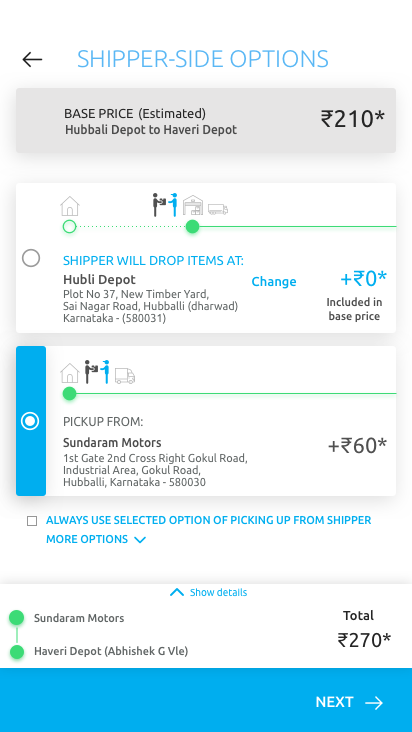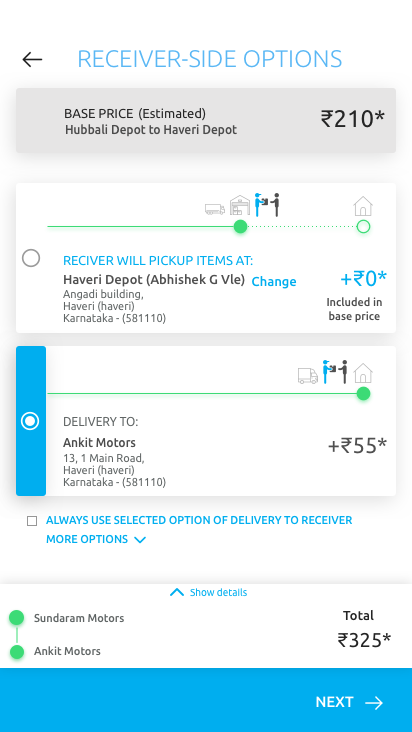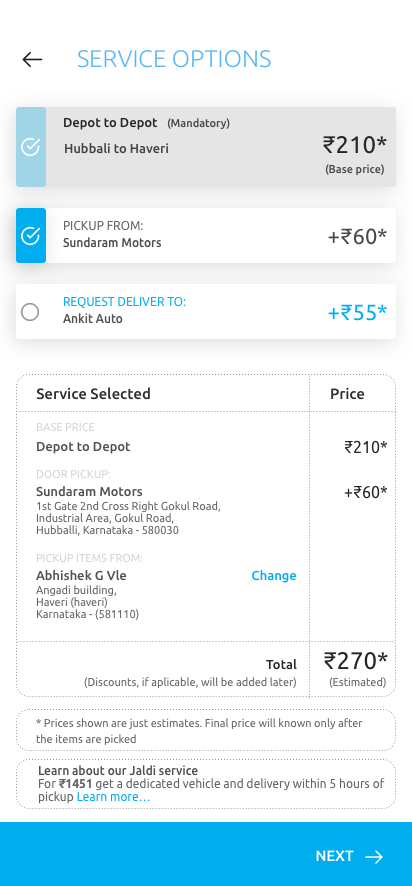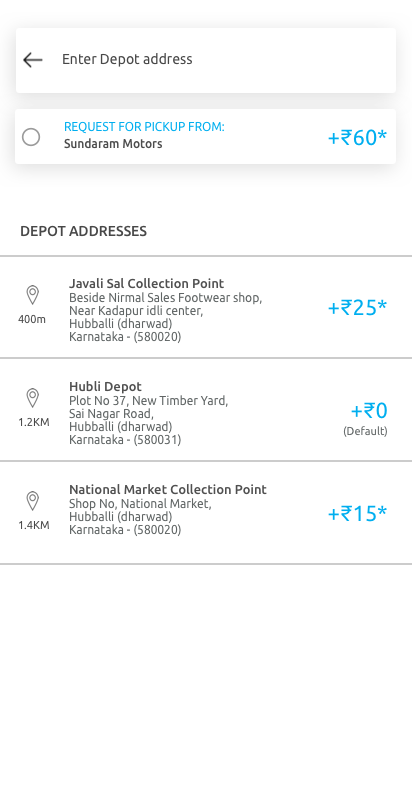



Component Pricing
Context
Tusker Village Transport, operated by Logistimo using Fleet technology, was growing at 5-8% MoM and was poised to scale to more geographies. The revenue to operational cost ratio was around 0.72
Goal
- Reduce operation’s fulfillment cost to achieve breakeven
- Increase revenue with competitive pricing
- Introduce a scalable pricing model
- Make pricing self serve
Action
- Data analysis indicated that first mile door pickup in dense market places of Tier-2 cities contributed to 45% of order fulfillment cost
- Lead multiple discussions across teams and came up with the idea to break up pricing into 3 components; door-pickup component, line-haul component, door-delivery component and allow users to choose service required
- Fleshed out the details of the new pricing,classified them using the MoSCow framework to arrive at final scope of the feature while adhering to delivery timelines
- Created detailed PRD with the pricing formula, use cases, scenarios and web-wireframes
- Created high-definition prototypes and worked with app users iteratively until qualitative evidence showed that the users understood the options presented without a need for onboarding or overlay screens
- Participated in sprints as product owner and conducted review sessions for delivery of quality code
Outcomes
- Walk-in orders increased to 64% from 35% eliminating first-mile costs further and passing on benefits to the customer
- Revenue increased to nearly 10% MoM as the business had the tools to respond to price changes faster, allowed users to customise their service and get a fair comparison of prices (earlier door-to-door price of Tusker was compared to depot-depot price of competition)
- Solution was scalable and eased the move to 5 new geographies
- 70% of the orders were placed through the customer app but the data quality was high and error rate was negligible